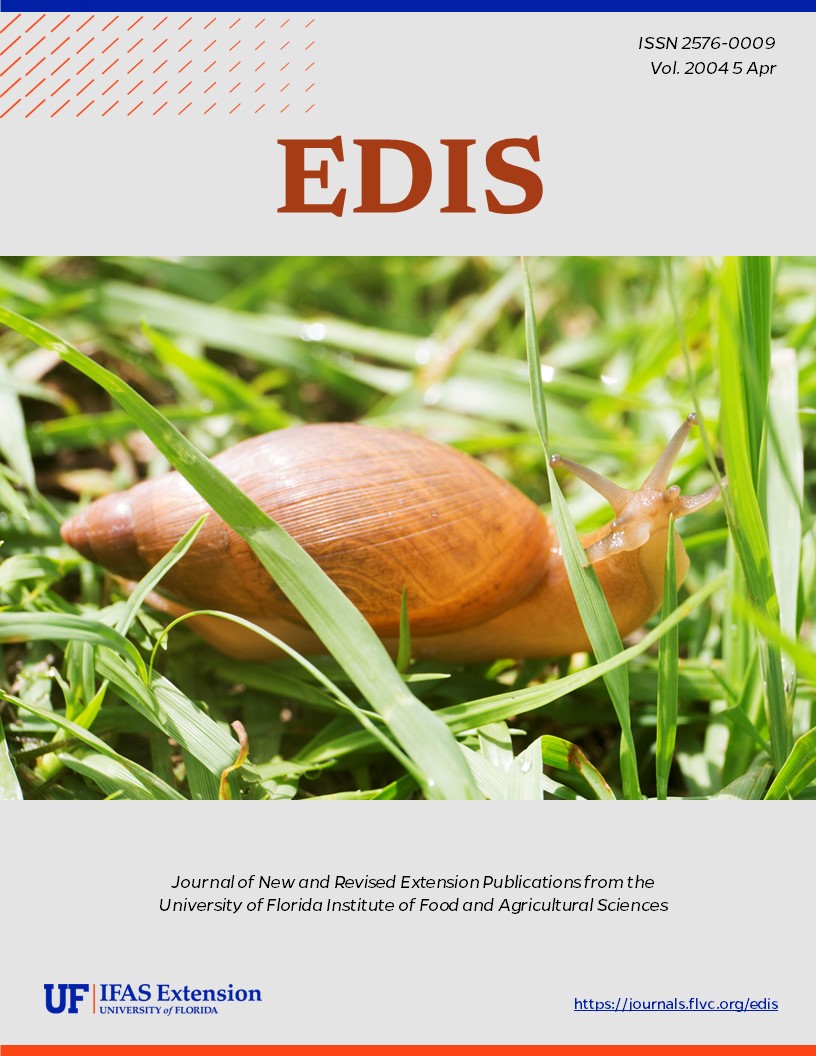Abstract
The brown dog tick, Rhipicephalus sanguineus Latreille, is unusual among ticks, in that it can complete its entire life cycle indoors. Because of this, it can establish populations in colder climates, and has been found in much of the world. Many tick species can be carried indoors on animals, but cannot complete their entire life cycle inside. Although R. sanguineus will feed on a wide variety of mammals, dogs are the preferred host in the US and appear to be required to develop large infestations. This document is EENY-221, one of a series of Featured Creatures from the Entomology and Nematology Department, Florida Cooperative Extension Service, Institute of Food and Agricultural Sciences, University of Florida. Published: July 2001.
References
Estrada-Pena, A. and F. Ascher. 1999. Comparison of an amitraz-impregnated collar with topical administration of fipronil for prevention of experimental and natural infestations by the brown dog tick (Rhipicephalus sanguineus). Journal of the American Veterinary Medical Association. 214: 1799-1803.
Folz, S. D., K. A. Ash, G. A. Conder and D. L. Rector. 1986. Amitraz: a tick and flea repellent and tick detachment drug. Journal of Veterinary Pharmacology and Therapeutics. 9: 150-156. https://doi.org/10.1111/j.1365-2885.1986.tb00024.x
Fox, M. T. and T. J. Sykes. 1985. Establishment of the tropical dog tick, Rhipicephalus sanguineus, in a house in London. Veterinary Record. 116: 661-662. https://doi.org/10.1136/vr.116.25.661
Franc, M. and M. C. Cadiergues. 1999. Activity of a deltamethrin shampoo against Ctenocephalides felis and Rhipicephalus sanguineus in dogs. Veterinary Parasitology. 81: 341-346. https://doi.org/10.1016/S0304-4017(98)00257-X
Koch, H. G. 1982a. Oviposition of the brown dog tick (Acari: Ixodidae) in the laboratory. Annals of the Entomological Society of America. 75: 583-586. https://doi.org/10.1093/aesa/75.5.583
Koch, H. G. 1982b. Seasonal incidence and attachment sites of ticks (Acari: Ixodidae) on domestic dogs in southeastern Oklahoma and northwestern Arkansas, USA. Journal of Medical Entomology. 19: 293-298. https://doi.org/10.1093/jmedent/19.3.293
Koch, H. G. and M. D. Tuck. 1986. Molting and survival of the brown dog tick (Acari: Ixodidae) under different temperatures and humidities. Annals of the Entomological Society of America. 79: 11- 14. https://doi.org/10.1093/aesa/79.1.11
Kumar, S., S. Prakash, M. P. Kaushik and K. M. Rao. 1992. Comparative activity of three repellents against the ticks Rhipicephalus sanguineus and Argas persicus. Medical and Veterinary Entomology. 6: 47-50. https://doi.org/10.1111/j.1365-2915.1992.tb00034.x
Rhodes, A. R. and B. R. Norment. 1979. Hosts of Rhipicephalus sanguineus (Acari: Ixodidae) in northern Mississippi, USA. Journal of Medical Entomology. 16: 488-492. https://doi.org/10.1093/jmedent/16.6.488
Smith, R. D., D. M. Sells, E. H. Stephenson, M. Ristic and D. L. Huxsoll. 1976. Development of Ehrlichia canis, causative agent of canine ehrlichiosis, in the tick Rhipicephalus sanguineus and its differentiation from a symbiotic richettsia. American Journal of Veterinary Research. 37: 119-126.
Sonenshine, D. E. 1993. Biology of Ticks. Vol. 2. Oxford University Press, NY. 465 pages.
Sweatman, G. K. 1967. Physical and biological factors affecting the longevity and oviposition of engorged Rhipicephalus sanguineus female ticks. Journal of Parasitology. 53: 432-445. https://doi.org/10.2307/3276606
Unless otherwise specified, articles published in the EDIS journal after January 1, 2024 are licensed under a Creative Commons Attribution-NonCommercial-NoDerivs 4.0 International (CC BY-NC-ND 4.0) license.

